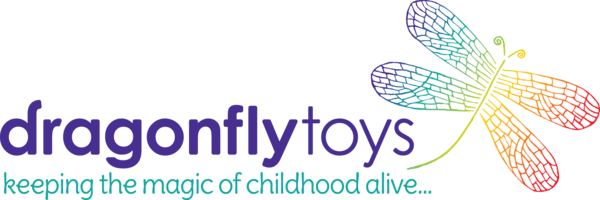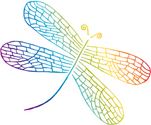
The forest - the grim, dark, rejuvenating, life-giving, mysterious forest. In folktales the world over, there's something special about going into the forest. The hero on his or the heroine on her quest inevitably treks deep into the forest. There are helpers and dangers along the way. In one lovely Danish tale, three brothers take it in turn to set out through the forest to bring a healing apple to an ailing princess. When they lose their way an old lady appears, asking what they have in their basket. The first two brothers don't spare her the time of day, and sarcastically answer "Snakes!" then "Worms!" Of course when they reach the palace to help the princess their own mean streak has transformed their basket of apples into just what they said: the first brother and his basket of snakes is thrown out, followed by the second and his basket of worms. Only the third brother - who the first two have also cheated of his fair share of the apple orchard - makes it to the castle with apples intact, after he was kind to the old woman in the forest and offered her an apple to eat. His good heart and his good apples of course cure the princess.
Iron John is another powerful story, this time a 'hearth tale' from the Grimm brothers, about a boy reaching into the depths in the forest (and his soul) to find his wild nature. Here is not the place to enter a Jungian analysis of this powerful story, and Robert Bly has done it extraordinarily well in his
own analysis anyway. This may seemingly draw a long bow, but the point is that we are inextricably bound to our forests, through our primeval history, through our stories and hence, through our psyches. They draw us in, they are a refuge, a source of mystery, fear, inspiration and renewal.

And so to play! Our toddlers are too small and precious to let loose in a national park, but the next best thing ...
tree branch blocks. In one
study more than 30 years ago, children in a treatment group were taught to use blocks and were encouraged to build, while a control group was not. After six weeks, the pre-schoolers in the treatment group showed significant improvement in spatial awareness, while those in the control group showed no change. There seems little doubt that toy blocks help develop spatial skills, and that it's valuable to a child's development to challenge them with building tasks, to encourage children to participate in cooperative building projects, and that it's useful to get down to floor level and play with your child at their level. But there's no escaping one simple fact. Kids can become more creative and inventive when they are exposed to fantasy and magic, and when they're introduced to that great forest of the soul!
 The forest - the grim, dark, rejuvenating, life-giving, mysterious forest. In folktales the world over, there's something special about going into the forest. The hero on his or the heroine on her quest inevitably treks deep into the forest. There are helpers and dangers along the way. In one lovely Danish tale, three brothers take it in turn to set out through the forest to bring a healing apple to an ailing princess. When they lose their way an old lady appears, asking what they have in their basket. The first two brothers don't spare her the time of day, and sarcastically answer "Snakes!" then "Worms!" Of course when they reach the palace to help the princess their own mean streak has transformed their basket of apples into just what they said: the first brother and his basket of snakes is thrown out, followed by the second and his basket of worms. Only the third brother - who the first two have also cheated of his fair share of the apple orchard - makes it to the castle with apples intact, after he was kind to the old woman in the forest and offered her an apple to eat. His good heart and his good apples of course cure the princess. Iron John is another powerful story, this time a 'hearth tale' from the Grimm brothers, about a boy reaching into the depths in the forest (and his soul) to find his wild nature. Here is not the place to enter a Jungian analysis of this powerful story, and Robert Bly has done it extraordinarily well in his own analysis anyway. This may seemingly draw a long bow, but the point is that we are inextricably bound to our forests, through our primeval history, through our stories and hence, through our psyches. They draw us in, they are a refuge, a source of mystery, fear, inspiration and renewal.
The forest - the grim, dark, rejuvenating, life-giving, mysterious forest. In folktales the world over, there's something special about going into the forest. The hero on his or the heroine on her quest inevitably treks deep into the forest. There are helpers and dangers along the way. In one lovely Danish tale, three brothers take it in turn to set out through the forest to bring a healing apple to an ailing princess. When they lose their way an old lady appears, asking what they have in their basket. The first two brothers don't spare her the time of day, and sarcastically answer "Snakes!" then "Worms!" Of course when they reach the palace to help the princess their own mean streak has transformed their basket of apples into just what they said: the first brother and his basket of snakes is thrown out, followed by the second and his basket of worms. Only the third brother - who the first two have also cheated of his fair share of the apple orchard - makes it to the castle with apples intact, after he was kind to the old woman in the forest and offered her an apple to eat. His good heart and his good apples of course cure the princess. Iron John is another powerful story, this time a 'hearth tale' from the Grimm brothers, about a boy reaching into the depths in the forest (and his soul) to find his wild nature. Here is not the place to enter a Jungian analysis of this powerful story, and Robert Bly has done it extraordinarily well in his own analysis anyway. This may seemingly draw a long bow, but the point is that we are inextricably bound to our forests, through our primeval history, through our stories and hence, through our psyches. They draw us in, they are a refuge, a source of mystery, fear, inspiration and renewal.  And so to play! Our toddlers are too small and precious to let loose in a national park, but the next best thing ... tree branch blocks. In one study more than 30 years ago, children in a treatment group were taught to use blocks and were encouraged to build, while a control group was not. After six weeks, the pre-schoolers in the treatment group showed significant improvement in spatial awareness, while those in the control group showed no change. There seems little doubt that toy blocks help develop spatial skills, and that it's valuable to a child's development to challenge them with building tasks, to encourage children to participate in cooperative building projects, and that it's useful to get down to floor level and play with your child at their level. But there's no escaping one simple fact. Kids can become more creative and inventive when they are exposed to fantasy and magic, and when they're introduced to that great forest of the soul!
And so to play! Our toddlers are too small and precious to let loose in a national park, but the next best thing ... tree branch blocks. In one study more than 30 years ago, children in a treatment group were taught to use blocks and were encouraged to build, while a control group was not. After six weeks, the pre-schoolers in the treatment group showed significant improvement in spatial awareness, while those in the control group showed no change. There seems little doubt that toy blocks help develop spatial skills, and that it's valuable to a child's development to challenge them with building tasks, to encourage children to participate in cooperative building projects, and that it's useful to get down to floor level and play with your child at their level. But there's no escaping one simple fact. Kids can become more creative and inventive when they are exposed to fantasy and magic, and when they're introduced to that great forest of the soul!

